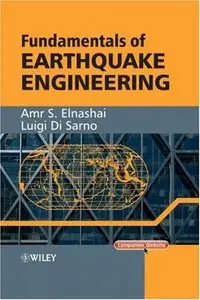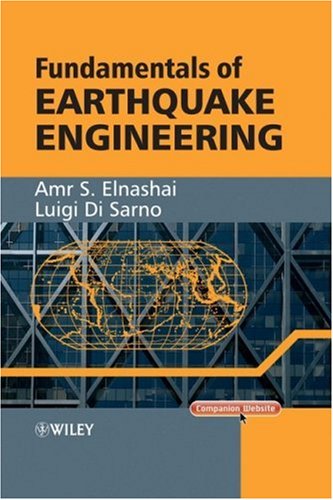Amr Elnashai, Luigi Di Sarno " Fundamentals of Earthquake Engineering"
Wiley | 2008-12-03 | ISBN: 0470024836 | 366 pages | PDF | 12,7 MB
Wiley | 2008-12-03 | ISBN: 0470024836 | 366 pages | PDF | 12,7 MB
Fundamentals of Earthquake Engineering combines aspects of engineering seismology, structural and geotechnical earthquake engineering to assemble the vital components required for a deep understanding of response of structures to earthquake ground motion, from the seismic source to the evaluation of actions and deformation required for design.
The nature of earthquake risk assessment is inherently multi-disciplinary. Whereas Fundamentals of Earthquake Engineering addresses only structural safety assessment and design, the problem is cast in its appropriate context by relating structural damage states to societal consequences and expectations, through the fundamental response quantities of stiffness, strength and ductility. The book is designed to support graduate teaching and learning, introduce practicing structural and geotechnical engineers to earthquake analysis and design problems, as well as being a reference book for further studies.
Fundamentals of Earthquake Engineering includes material on the nature of earthquake sources and mechanisms, various methods for the characterization of earthquake input motion, damage observed in reconnaissance missions, modeling of structures for the purposes of response simulation, definition of performance limit states, structural and architectural systems for optimal seismic response, and action and deformation quantities suitable for design. The accompanying website at www.wiley.com/go/elnashai contains a comprehensive set of slides illustrating the chapters and appendices, as well as a set of problems with solutions and worked-through examples. The book, slides and problem set constitute a tried and tested system for a single-semester graduate course. The approach taken avoids tying the book to a specific regional seismic design code of practice and ensures its global appeal to graduate students and practicing engineers.
This book is an ideal textbook for earthquake and structural engineering students, readers will find that it is generic , focusing on fundamental problems rather than regional coverage. The book includes problems to be used as homework assignment together with some solved examples. The accompanying CD/website (TBC) will contain some simple programs for strong-motion and spectra as well as structural response analysis. The features are: presents new and advanced concepts in a simple and modern fashion; provides a consistent approach to the subject matter across chapters; focuses on underlying principles and concepts essential to earthquake engineering methodologies under development today; and discussions include characterization of seismic input, evaluation of response, assessment of performance, and retrofit and rehabilitation.



